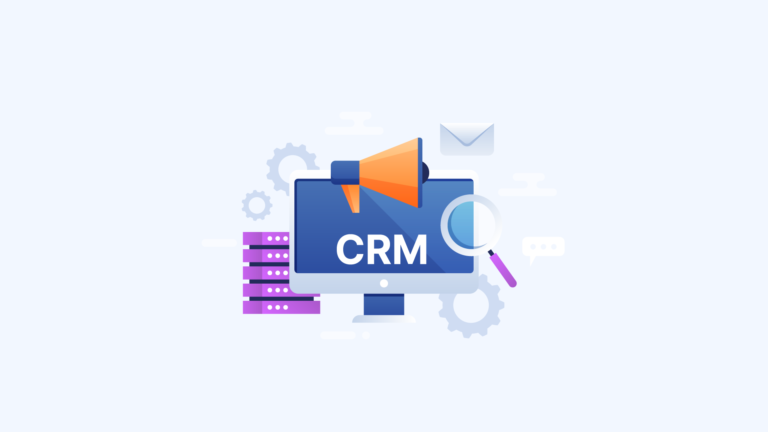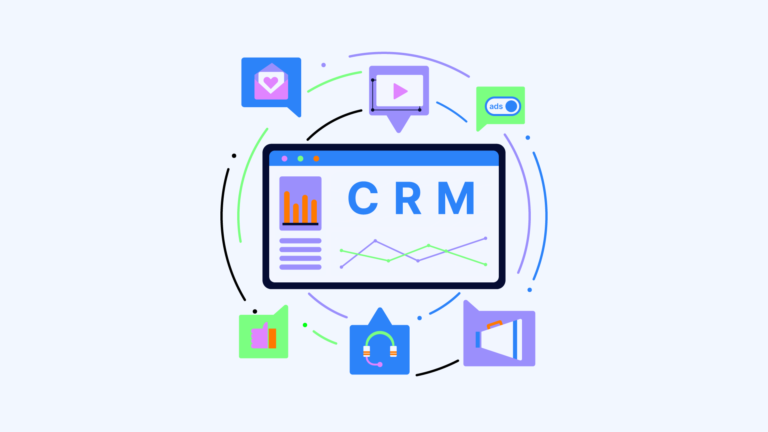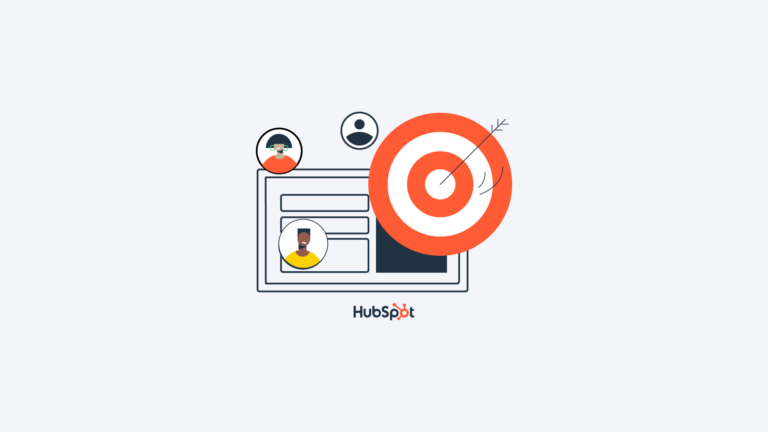|
Getting your Trinity Audio player ready...
|
As a business grows, it becomes increasingly difficult to keep track of customers and prospects. Without a CRM strategy in place, it can be hard to remember who needs follow-up calls or emails and when they need them. Sticky notes may help for a while, but eventually, they become too cumbersome and inefficient. That’s why having an effective CRM strategy is so important.
A good CRM strategy should include tools that make it easy to store customer data, track interactions with customers, automate follow-up tasks, and measure the success of your efforts. It should also provide insights into customer behavior so you can better understand their needs and preferences.
Developing a comprehensive CRM strategy requires careful planning and consideration of all the different aspects of customer relationship management. It’s important to take the time to research the best tools available and determine which ones will work best for your business before investing in any software or services.
With the right CRM strategy in place, you can ensure that your customers are always top-of-mind and that you’re providing them with the best possible experience.
In this article we take you through what a CRM strategy is and why its important. We also share how to develop one for your business with some examples of effective CRM strategies you can implement.
Let’s take a look!

What is a CRM Strategy?
A customer relationship management (CRM) strategy is a plan that helps businesses develop and maintain positive relationships with their customers.
A CRM strategy is important because it helps a business understand and meet the needs of its customers, which can lead to increased customer satisfaction and loyalty, as well as improved business performance.
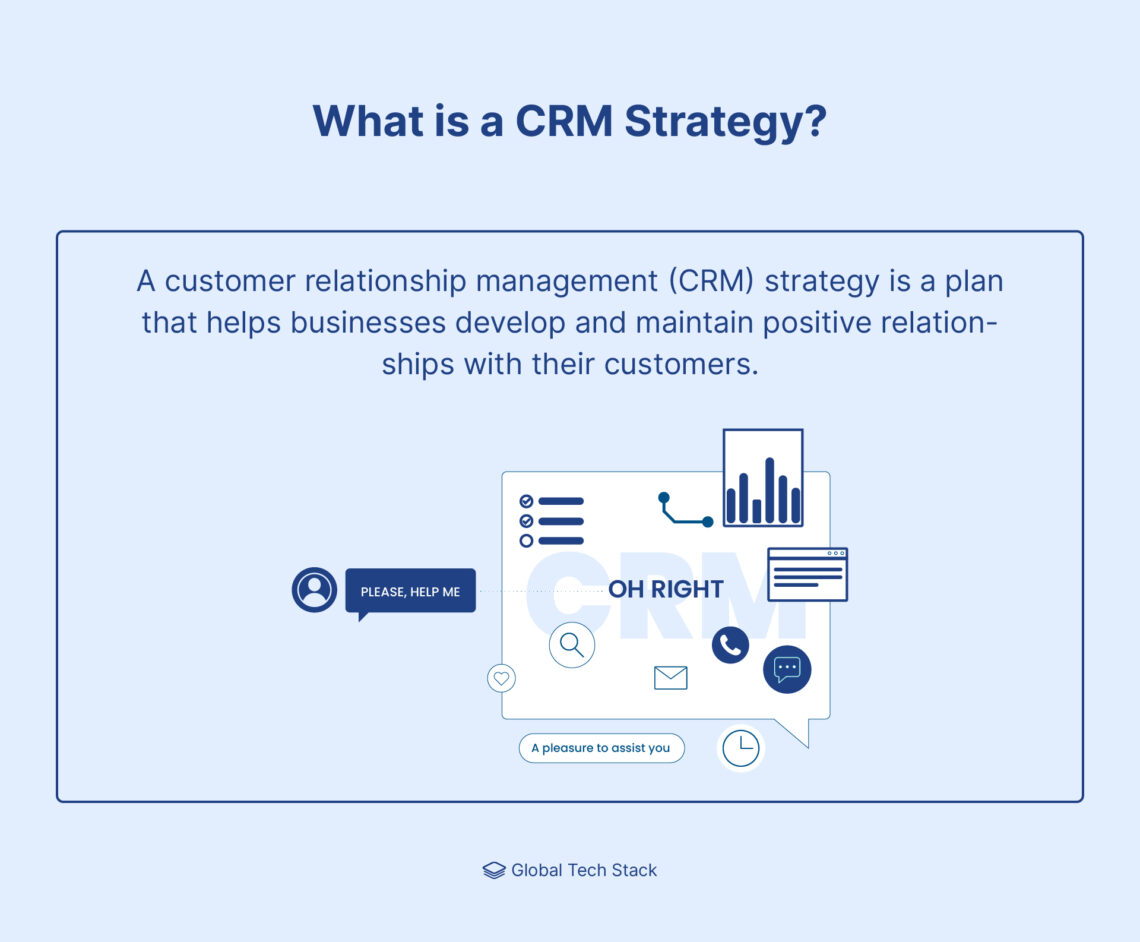
One of the key components of a CRM strategy is the collection and analysis of customer data.
By gathering information about customers’ preferences, purchasing habits, and interactions with the business, companies can better understand their customers’ needs and tailor their products, services, and marketing efforts accordingly. This data can be collected through a variety of means, including customer surveys, website analytics, and social media monitoring.
Another important aspect of a CRM strategy is the use of technology to manage customer relationships. CRM software can help businesses organize and manage customer data, automate marketing and sales processes, and facilitate communication with customers. This can help businesses save time and resources, and improve their efficiency and effectiveness in interacting with customers.
In addition to technology, a CRM strategy should also include processes and policies for managing customer relationships. This might include establishing customer service standards, setting up customer loyalty programs, and defining roles and responsibilities within the organization for managing customer relationships.
Why a CRM strategy is Important
Customer Relationship Management (CRM) is a powerful tool for businesses of all sizes. It allows you to keep track of customer interactions, from the first time they visit your website to the last time they made a purchase.
With CRM, you can store customer contact information, buying preferences, and notes from conversations with them. This data can be tailored to fit your business needs and collect as much or as little as needed to help serve customers better and convert prospects more efficiently. It ensures your a clear follow through of your business strategy.
Below are some of the reasons a CRM strategy is important for your business:
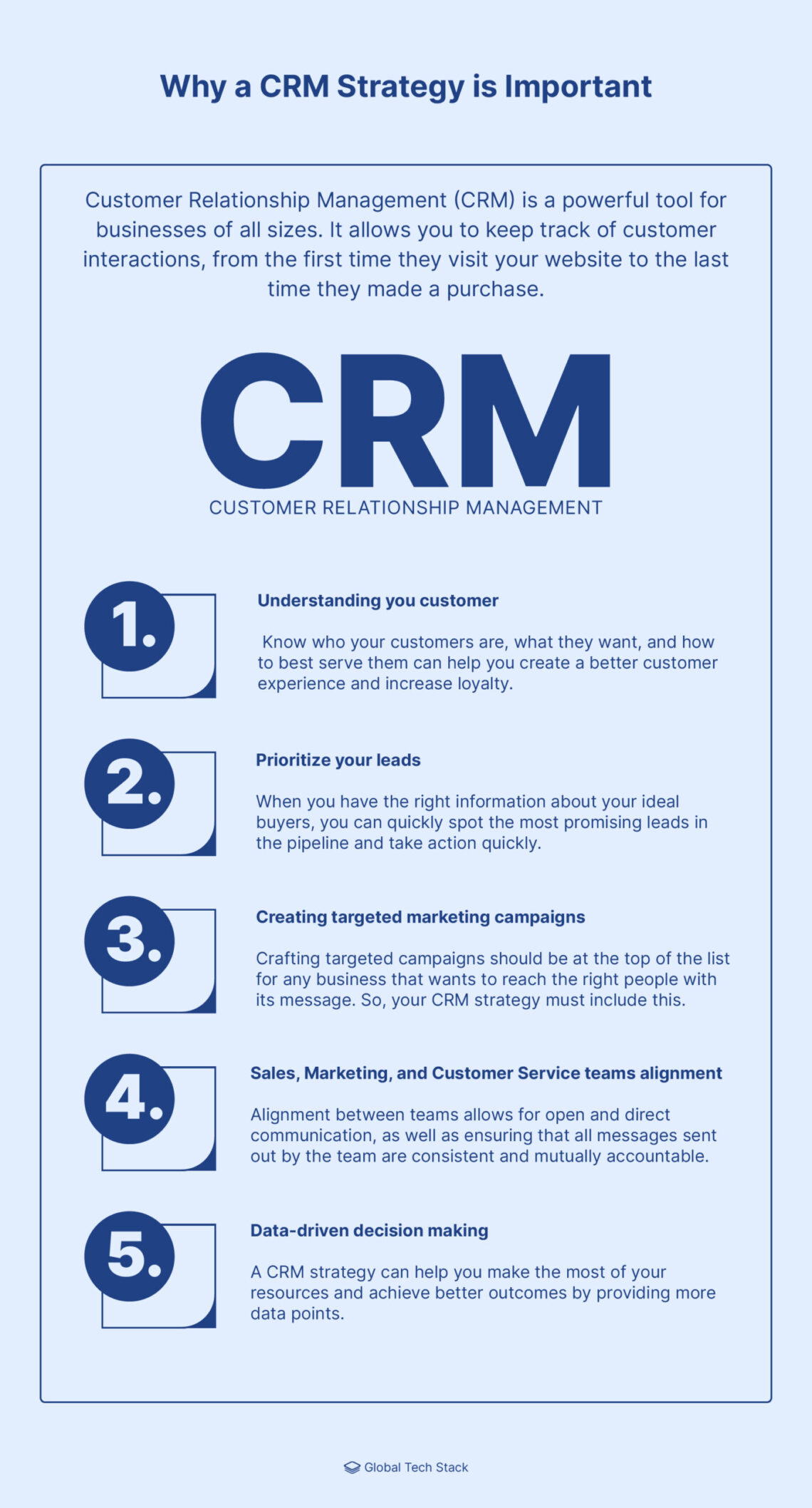
1. Understanding you customer
Having a deep understanding of your customers is essential for any business. Knowing who they are, what they want, and how to best serve them can help you create a better customer experience and increase loyalty.
CRM software is an excellent tool for getting to know your customers on a deeper level than just their name, email address, or job title. With CRM, you can track the date and type of their last interaction with your business, their past orders, as well as what brought them to your company.
This data can be used to provide personalized communication and in-product experiences such as dedicated onboarding, in-product tips, targeted content, or offering special features for free when you see that it’s a deal-breaker for them.
Personalization is key when it comes to creating a great customer experience. A study found that 63% of customers reported that they want personalized recommendations. These small things go a long way toward helping you create a more accurate picture of your target customer.
By taking the time to get to know your customers through CRM software and providing personalized experiences tailored specifically for them, you will show that you value their business and make them feel appreciated. Your customers will appreciate the attention to detail and be
2. Prioritize your leads (Which lead to go after first)
For any successful sales process identifying priority leads is an essential part. By having customer profiles and knowing all the essential information about your ideal buyers, you can quickly spot the most promising leads in the pipeline and take action quickly.
This will help your sales teams to hit their quotas as they can devote more time to leads that are likely to convert, knowing exactly what arguments to use to convince them to buy.
Not only does this strategy help with hitting quotas, but it also boosts employee morale. When sales teams can identify priority leads and successfully close deals, they get their bonus and feel a sense of accomplishment.
This feeling of success encourages employees to continue working hard and strive for even better results in the future. Identifying priority leads is a great way for businesses to ensure that their sales team is motivated and productive.
3. Creating targeted marketing campaigns
Crafting targeted campaigns should be at the top of the list for any business that wants to reach the right people with its message.
Knowing your audience and understanding what they are looking for in products like yours is key to creating effective campaigns. You need to know the words they use when searching for a product, so you can craft messages that resonate with them.
Having multiple buyer personas allows you to tailor your strategy for different markets. Segmenting your audience based on similarities makes it easier to create campaigns that speak directly to each group’s needs.
To get started, it’s important to define your buyer persona by researching who they are, what their interests are, and how they interact with your brand. Once you have this information, you can craft targeted campaigns that will be more likely to convert potential customers into loyal ones.
4. Sales, Marketing, and Customer Service teams alignment
When teams are working together, they must be properly aligned to achieve the best results.
Alignment between teams allows for open and direct communication, as well as ensuring that all messages sent out by the team are consistent and mutually accountable.
This helps to ensure that customers have a better understanding of the company’s goals and objectives, which in turn leads to increased customer satisfaction.
Aligning teams also has other benefits such as improved collaboration, increased efficiency, and better decision-making. When teams are properly aligned, they can work together more effectively and efficiently on tasks related to the CRM strategy. This helps to reduce costs associated with implementing the strategy while also improving customer service levels.
Additionally, when teams are properly aligned it makes it easier for them to make decisions quickly and accurately based on customer feedback or data collected from their CRM system.
5. Data-driven decision making
Making data-driven decisions is a key part of running a successful business. A CRM strategy can help you make the most of your resources and achieve better outcomes by providing more data points.
With a CRM system, it’s easy to aggregate the data, spot dependencies, and make informed decisions for your next sales cycle performance. You can calculate the ROI of every channel and campaign to determine which ones are worth investing in.
Sales forecasting also becomes more accurate and easier with CRM software, allowing you to set smaller, more specific goals that will help you reach your broader business objectives.
By leveraging the power of data-driven decisions, businesses can gain insight into their customer’s needs and preferences as well as identify trends in their industry. This allows them to adjust their strategies accordingly and stay ahead of the competition.
Data-driven decisions also enable businesses to make better use of their resources by focusing on what works best for them. Ultimately, this leads to increased efficiency and improved customer satisfaction levels.
How to Create an Effective CRM Strategy
A CRM strategy is essential for companies looking to grow and succeed in today’s digital world. But it’s important to know how to build one that’s effective and sustainable over time.
Here are five steps to help you do just that:
1. Audit your business
A SWOT analysis helps you identify strengths, weaknesses, opportunities, threats, and risks. This is a great way to evaluate your current situation and plan for a more effective business strategy. You can use this information to make better decisions about your business.
Your CRM should help you track your progress toward meeting those goals. If you don’t set specific goals, you’ll never know whether you’re making progress.
You need to keep track of customers’ preferences, buying habits, and feedback. In addition, you want to build strong relationships with your clients.
CRMs are designed to store data. Make sure yours does what you need it to do.
2. Define your goals
If you’re looking to grow your brand online, it helps to define what success looks like. Otherwise, you could end up setting yourself up for failure.
You might consider creating videos or blog posts if you want to teach people something. On the other hand, if you want to entertain, you might choose to write funny tweets or post memes.
You don’t necessarily have to spend money to make money. But if you’re serious about growing your brand, you’ll probably want to invest in paid advertising. You can use Facebook ads, Google Ads, or even LinkedIn Ads to promote your content.
If there are already lots of similar businesses doing what you do, you might want to rethink your strategy. There’s no shame in being different, but if there are plenty of competitors, you might want to find ways to stand out. For example, maybe you offer unique products or services. Or perhaps you focus on providing high-quality content.
3. Identify your target customer(s)
Buyer personas are one of the most important tools you can use to define your ideal customer. They allow you to see yourself as your ideal customer does.
By understanding who your ideal customer is, you can better understand where he or she needs your product or service. You can then tailor your marketing messages to appeal to those specific individuals.
Customer interviews are another great tool for identifying your target market. This method allows you to speak directly with potential buyers about their current buying habits and preferences.
Interviews can reveal things like whether or not they prefer to buy online versus offline, what types of products they purchase, and even why they choose certain brands over others.
Finally, customer surveys are a great way to learn more about your target market. Surveys can provide information such as demographics, interests, behaviors, attitudes, opinions, and motivations.
These data points can help you develop buyer personas and determine which segments of your market are most likely to respond positively to your brand.
4. Outline your customer journey
The most successful companies are those that know exactly where their customers come from and how to move them through the sales process. They understand what happens after someone visits their site. They know how to track conversions and measure success. And they’re constantly refining their marketing efforts based on data.
In today’s digital world, there are many ways to collect information about your customers. You can use analytics tools like Google Analytics and Facebook Pixel to see where people land on your site, what they look at, and how they behave once they arrive. You can also use email marketing software to learn more about your audience. But none of these methods tell you everything you want to know.
That’s why it’s important to combine multiple sources of data into one place. This way, you’ll be able to see the full picture of your customer journey. You’ll know where they start, how they progress through your funnel, and what happens after they convert.
5. Understand your competitors and your positioning
You know you’re competing with others, but how do you understand where you stand? You might think it’s easy to look up your competition online and see what they’re doing, but there’s more to it than just knowing what they’re saying about themselves.
Understanding your competitors is one of the most important things you can learn about your industry. Why because competitors have your best customer.
If you want to make money, you need customers. And if you don’t already have customers, you need to find some. But finding customers isn’t always easy. If you’re trying to sell something like a product or a service, you need to go out into the world and talk to people.
This can be hard work, especially if you’re selling a complex product or service. But if you want to succeed, you need to spend time talking to potential customers.
When you start looking around, you’ll notice that everyone else seems to be doing well. Maybe they’ve got lots of traffic coming to their site, or maybe they’re getting tons of sales. Either way, it looks like they’re succeeding. So what gives? Why aren’t they making more money? What’s different about them? These questions help you identify opportunities.
For example, maybe they’re offering a great deal on their products, or maybe they‘re providing better customer support than you are. Or perhaps they’re simply doing a lot less marketing than you are. Whatever the case, you’ll be able to figure out what makes them successful and use those insights to improve your own business.
Once you’ve identified your competitors, you can start thinking about how you can differentiate yourself. For instance, maybe you offer free shipping while they charge extra for delivery. Or maybe you provide 24/7 live chat support while they don’t. Or maybe you give away a ton of freebies while they don’ t.
There are dozens of ways to differentiate yourself, and once you start thinking about them, you’ll realize that you’ve been doing many of them without even realizing it.
CRM Strategy Examples
An effective CRM strategy is essential for any business looking to improve customer satisfaction and retention. By utilizing a CRM system, businesses can gain valuable insights into customer behavior, preferences, and needs.
This data can then be used to create personalized experiences that will help build relationships with customers and increase loyalty.
Segmentation
One example of an effective CRM strategy is segmentation. Segmenting customers into different groups based on their behaviors, interests, or demographics allows businesses to tailor their marketing efforts to each group’s specific needs.
For instance, a business may segment its customers by age group and send targeted emails or promotions tailored to each age group’s interests. Additionally, segmentation can also be used to identify high-value customers who should receive special offers or discounts as a reward for their loyalty.
Personalization
Another example of an effective CRM strategy is personalization. Personalizing customer interactions by using the data collected from the CRM system helps businesses create more meaningful connections with their customers.
For instance, businesses can use customer data such as purchase history or preferences to suggest products or services that are relevant to the individual customer’s needs. Additionally, personalizing communications through automated emails or messages can help make customers feel valued and appreciated.
Tailored targeted marketing is a great way to increase customer engagement and loyalty. By personalizing emails, you can make your customers feel more valued and appreciated.
This can be done by simply including their first name in the subject line of the email or by providing them with personalized sales enablement, case studies, and guides that are tailored to their needs. Studies have shown that personalized email subject lines are 26% more likely to be opened than generic ones, making it an effective way to reach out to potential customers.
Personalized communication in the advertisement is also a great way to increase brand perception and attitude. By customizing ads based on user behavior, interests, and preferences, you can create a more meaningful connection with your target audience.
This will help build trust between you and your customers as they will feel like you understand their needs better than anyone else. Additionally, this type of marketing strategy can also help boost conversions as it speaks directly to the customer’s wants and needs.
Customer Success approach
The customer success approach is a way for companies to ensure that their customers are getting the most out of their products or service. It involves establishing a true connection with customers, understanding their personal and professional needs, and proactively reaching out to them to anticipate their requests.
Companies can offer useful materials such as blog posts, YouTube videos, How-To’s, and live Q&A sessions to help customers get the most out of their products.
On top of this, running assessment calls is also an important part of the customer success approach. This involves calling up customers to make sure they are satisfied with everything and helping them if they have any questions or issues.
Overall, the customer success approach helps companies build relationships with their customers that will lead to increased loyalty and positive word of mouth which can bring in new customers.
It’s an effective way for companies to ensure that their customers are getting value from their product or service and it can be beneficial for both parties involved.
Customer reward programs
Rewards programs and tiers are a great way to show appreciation to your loyal customers. By offering them special conditions, you can encourage them to continue using your product or service.
This is especially important for businesses that rely heavily on customer feedback and suggestions for new features and functionality. Rewarding customers with discounts or other incentives can help build loyalty over time, as customers will be more likely to stick with you if they feel appreciated.
However, it’s important to remember that customer loyalty doesn’t happen overnight. Before offering any kind of rewards program or tier system, make sure that your product or service is up to the standards of your customers.
If it isn’t, then no amount of discounts or incentives will be enough to keep them coming back. Make sure that you have a good foundation in place before trying to reward your customers – otherwise, you may end up doing more harm than good.
Customer engagement
It’s important to maintain a positive relationship with your customers after the transaction, as this can be a major red flag for clients. By engaging with your customers, you can ensure that they remain loyal and satisfied with your services.
Your KPIs will improve if you can successfully engage with your customers. One of the best ways to do this is by sending welcome or thank you emails. This is a great way to show your appreciation and build relationships with consumers.
Additionally, it’s important to respond quickly and efficiently when customers have questions or concerns, as this will help them feel valued and appreciated.
Finally, offering incentives such as discounts or special offers can also be effective in increasing customer engagement. By implementing these strategies, you can ensure that your customers remain engaged and satisfied with your services.
Craft a Winning CRM Strategy
In conclusion, a CRM strategy is an essential part of any business looking to make data-driven decisions and improve customer satisfaction.
By leveraging the power of data, businesses can gain valuable insights into their customer’s needs and preferences as well as identify trends in their industry. Additionally, segmentation and personalization can be used to create more meaningful connections with customers and increase loyalty.
Having a strong sales CRM strategy is essential for converting more prospects. With the right CRM platform, you can create an organized and streamlined sales process. This will help you attract more prospects and close more deals.
To make the most of your CRM software, it’s important to learn the ins and outs of your platform and articulate a clear strategy for incorporating your new tools.
The HubSpot CRM is a great way to enhance your CRM strategies. It offers features such as automated lead scoring, email tracking, and contact management. This will help you make the most of your CRM software.
With Sell, you’ll have access to powerful insights into customer behavior so you can better understand their needs and tailor your approach accordingly. Start your free trial today to see how HubSpot can help you get the most out of your CRM strategy and grow your ROI.

